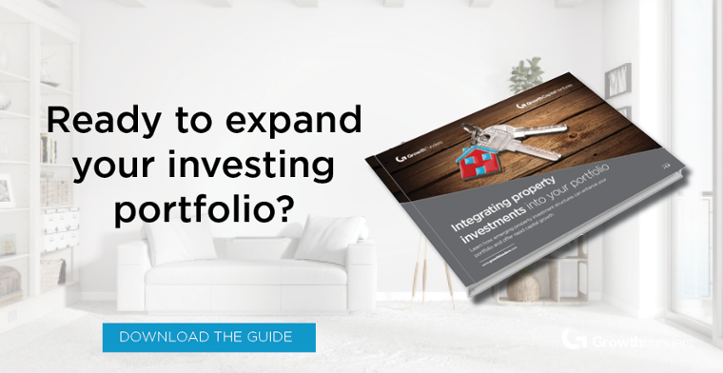An introduction to property investing: passive vs active
One of the most important parts of investing is understanding every part of the investment opportunity and process. Without that understanding, you don't have the education you need to make informed decisions - and without this, you can't be confident that you're making investments most suited to your needs.
Having talked about a variety of property-investment related phrases and terms, today I want to look at one of the high level decisions you have to make as an investor - deciding between being a passive or active investor.
Passive property investing
What is passive investing?
Passive investing is a type of investment strategy whereby you have little to no involvement in the actual management of the asset. On the highest of levels you invest your money and then effectively take a step back, with any return delivered without the need for you to be involved.
When we look at investing on the highest of levels, the most notable example of passive investing is placing money into an an Individual Savings Account (ISA). You put in your money - up to £20,000 every financial year at present - and receive a return that's the level of interest defined.
For instance, if the interest rate was 1.5% and you invested your full allowance (and didn't withdraw it), you'd have £20,300 in your account at the end of the year for absolutely no involvement.
How do you invest in property passively?
Whilst many believe property investing is very much not passive-based - buying a property and renting it out requires a considerable amount of involvement as an investor, for instance - there are in fact numerous passive investment opportunities available when looking at property.
In many ways, it's looking for the investment opportunities that are akin to the more traditional ways of investing passively - into a company by buying shares, for example.
By investing into the likes of British Land, a company that is listed on the London Stock Exchange, you can buy shares as you would any other listed company. Holding these shares gives you an indirect investment into property (British Land invests into some of the most notable properties in the UK, such as the UK's fourth biggest shopping centre, Meadowhall, and Regent's Place, a campus in London home to 20,000 workers and residents), but without any requirement to be actively involved after your investment has been made.
As is the case with all types of investment into shares, you can undoubtedly be active, buying and selling your shares on a daily basis, but you can also be at the complete other end of the scale, investing once and not touching it until you decide to sell after what could be several years.
There are also a number of property investing opportunities that are becoming increasingly accessible that can very much offer a passive way to get into property, but in more of a direct style.
Take residential property development projects, for which our recently closed out Chilton opportunity is a perfect example.
Targeting a 1.5x money return over a period of between 18 and 22 months, investors provided £400,000 worth of equity to the opportunity. Investors were provided with the full opportunity details and made a decision to invest on everything from the rate of return through to the opportunity location, dependent on what their requirements as an investor are.
As soon as the money is invested, however, there's very little to do from an investor perspective. The development of the site and properties progresses and once sold, should the targets be met, the profits are returned to the investors. There's no on-going activity needed, but not offering liquidity means you're generally invested into the opportunity until the properties are sold.
Active property investing
What is active investing?
The direct opposite investment strategy to passive, being an active investor requires a large amount of hands on involvement in the investment process and lifespan of the investment.
This could range from speaking directly with property sellers and all of the related parties (i.e., lawyers, accountants) if you're buying a single buy-to-let, right through to the example above, buying and selling shares in property companies, but doing so regularly, aiming to take advantage of the daily or weekly fluctuations of share prices.
How do you invest into property actively?
For many active investors, it's very much a full time 'job'. Whereas many property investors start by being passive investors and do so alongside other commitments, it's normal to be an active investor and effectively have this as your full time 'profession'.
Landlords with a large portfolio of properties are a perfect example of such an active investor. If you owned 50 properties, for instance, these all need checking regularly. They need maintaining and repairing. And if there's at least 50 tenants within these properties, there's the responsibilities that come with managing these, their deposits and the on-going financial commitments.
On a different level, you could buy properties in need of refurbishment - or those that are off-plan - and sell them once they're in a position to achieve their true market value. This generally involves buying the property low, putting it through a full refurbishment and then selling it for a profit.
The benefits of being a particularly active property investor can often mean you see a greater level of return, but the decision needs to be made as to whether your ability to being so active is a) achievable and b) in line with the returns you're aiming to see.
For some investors, this activity isn't something they're able to commit to - or want to commit to. For many others, however, it's something they thrive on and simply find it part of the investment journey.
Choosing the right property investment route for you
There's no right or wrong answer when deciding on whether to invest into property actively or passively. They both have their merits and both have risks. Some of these risks are greater than others, but this is largely found at a level that's more specific than at the active or passive level.
Similarly, whilst most investors will have a preference towards passive or active investments, it's very common to invest into both. This itself shows the huge potential when it comes to diversification with property - you don't need to look at other asset classes for diversification if you're a property investor and can have a particularly diverse portfolio by exploring the various property investment opportunities that are available.
%20(3)%20(2).jpg)









